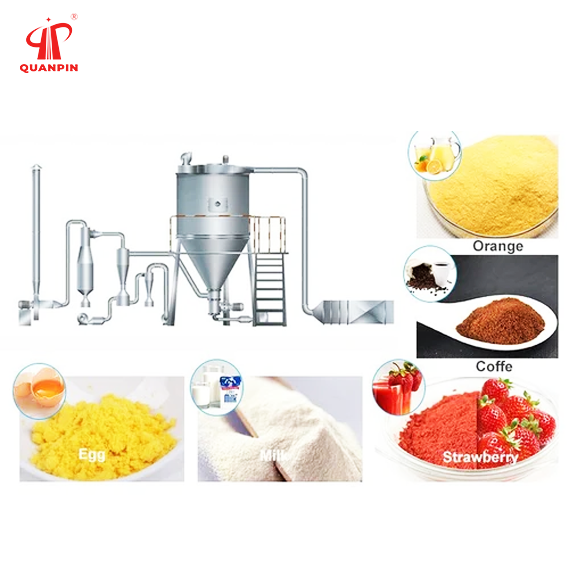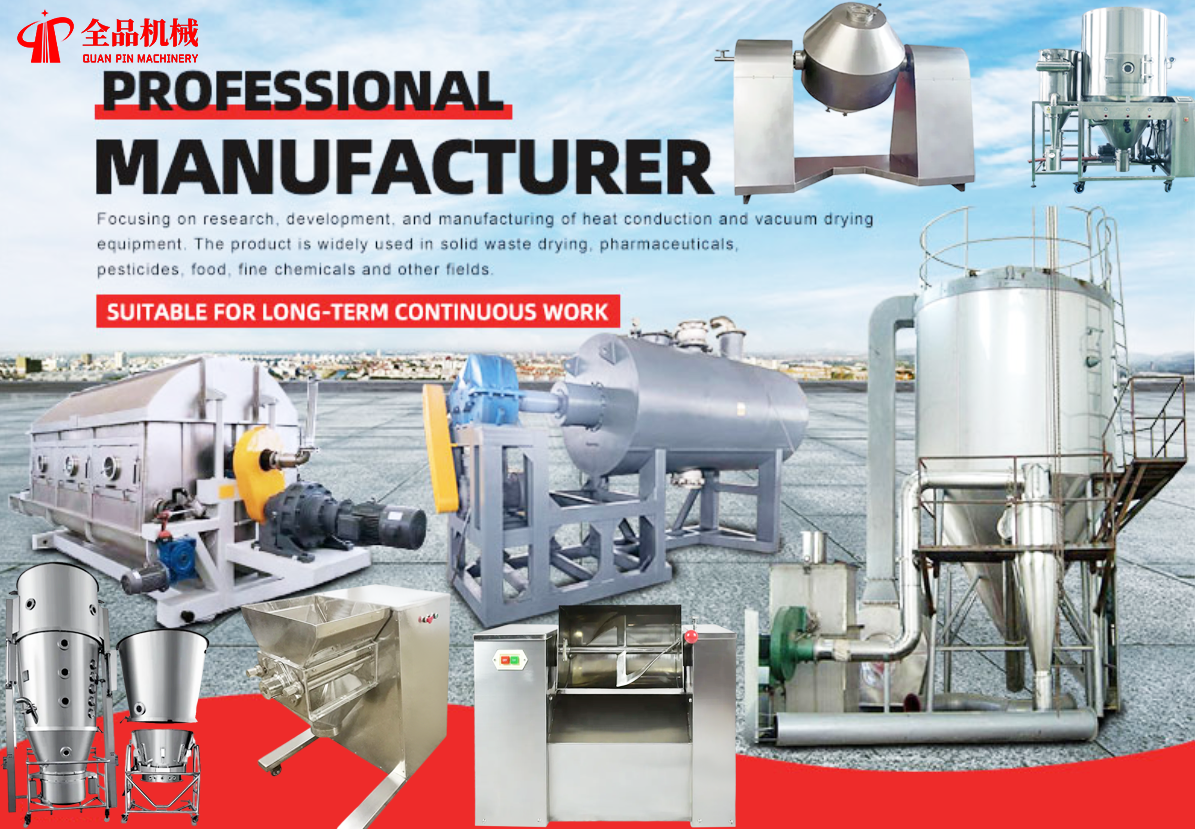Spray dryer drying in the original which leads to sticky… How to control
Spray-dried foods fall into two categories: non-sticky and sticky. Non-sticky ingredients are easy to spray dry with simple dryer designs and free-flowing final powders. Examples of non-viscous materials include powdered eggs, powdered milk, maltodextrins such as solution, gums, and proteins. In the case of sticky foods, there are drying problems under normal spray drying conditions. Sticky foods typically stick to the dryer walls or become useless sticky foods in drying chambers and transportation systems with operational problems and low product yields. Sugar and acid-containing foods are typical examples.
Stickiness is a phenomenon encountered during the drying of frequently sprayed sugar- and acid-rich food materials. Powder tack is a cohesive adhesion property. It can be explained in terms of particle-particle adhesion (cohesion) and particle-wall adhesion (adhesion). The measure of force with which the powder particles bind is due to its internal properties known as cohesion, forming lumps in the powder bed. Therefore the force required to break through the powder agglomerates should be greater than the cohesive force. Adhesion is an interfacial property, the tendency of the powder particles to adhere to the walls of the spray drying equipment. The cohesion and adhesion are key parameters in the design of drying and drying conditions. The surface composition of the powder particles is mainly responsible for the adhesion problem. The cohesion and adhesion tendencies of the powder particle surface materials are different. Because drying requires a large amount of solute transfer to the particle surface, it is bulk. The two viscous characteristics (cohesion and adhesion) can coexist in spray-dried sugar-rich food materials. Adhesion between particles is cohesion is the formation of fixed liquid bridges, moving liquid bridges, mechanical interlocking between molecules and electrostatic gravity and solid bridges. With drying chamber wall powder particles stick mainly due to material loss in spray drying of sugar and acid-rich foods. Powdery substances when retained longer in the wall drying loss.
Causes of Sticking:
Spray Sugar and Acid Rich Foods Drying Powder Recovery Utilizing spray drying technology, low molecular weight sugars (glucose, fructose) and organic acids (citric, malic, tartaric) are very challenging. High water absorption, thermoplasticity, and low glass transition temperature (Tg) these small molecules contribute to the stickiness problem. Spray drying temperatures above Tg 20°C, these ingredients mostly form soft particles on sticky surfaces, causing the powder to stick and end up with a paste-like structure instead of a powder. The high molecular mobility of such molecules is due to their lower glass transition temperature (Tg), which leads to stickiness problems at temperatures usually popular in spray dryers. The glass transition temperature is the main characteristic of the amorphous phase transition temperature. The glass transition event occurs when a hard solid, amorphous sugar, undergoes a transformation into a soft rubbery, liquid phase. Surface energy, solid glass has a low surface energy and does not adhere to low-energy solid surfaces. As a result of the transition from the glass state to the rubbery (or liquid) state, the material surface can be raised, and molecular and solid surface interactions can begin. In a food drying operation, the product is in a liquid or bonded state, and due to the removal of the plasticizer (water) the liquid/bonded food product becomes a glassy state. The food material will remain high energy viscous if the food product does not undergo a transition from high drying temperature than a change in vitrification temperature. If this food product is in contact with a solid surface with high energy it will stick or cling to it.
Controlling Viscosity:
There are a number of materials science and process-based approaches to reducing viscosity. Materials science based methods include high molecular weight materials liquid drying additives to raise the temperature beyond the glass transition, and process based methods include walls, bottoms, etc. of mechanical chambers.
Post time: Mar-15-2025


